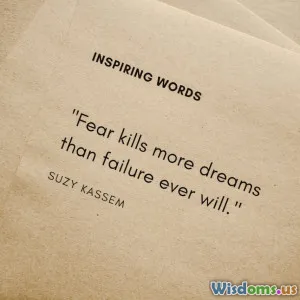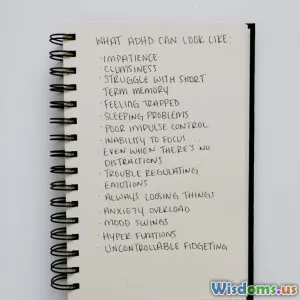
Magic and Human Cognition
8 min read Explore how magic exploits human cognition, revealing the mysteries behind perception, attention, and illusion in stage magic. (0 Reviews)
Magic and Human Cognition: The Hidden Mechanics Behind Stage Mysteries
Imagine sitting in a darkened theater, watching an ordinary deck of cards transform in impossible ways or witnessing a person vanish into thin air. These experiences of awe and surprise aren’t just sleight of hand — they are carefully crafted manipulations of human cognition. Magic and human cognition are deeply intertwined, and understanding this relationship reveals the delicate mechanics behind stage mysteries.
Introduction: The Cognitive Wonder Behind Magic
Magic has enthralled humans for millennia, transcending cultures and epochs. However, behind every astonishing illusion lies a nuanced understanding of how our minds process information. Magicians are not just entertainers; they are experts in human attention, perception, and memory — the core components of cognition.
The fundamental principle of magic is to exploit cognitive biases and limitations, enticing the brain to accept false narratives as reality. This draws people in, sparks curiosity, and pushes the boundaries of what seems possible.
How Magic Manipulates Human Cognition
Selective Attention and Misdirection
One of the most potent tools in a magician’s arsenal is selective attention, the brain’s natural tendency to focus on specific stimuli while ignoring others. Magicians leverage this with misdirection, a technique that subtly shifts audience attention away from the method behind the trick.
Consider the classic “vanishing coin.” The magician asks the audience to watch their right hand closely as they seemingly place a coin inside it. But the magician’s left hand is performing the secret move, expertly concealed by a grand gesture or a flashed smile. The brain’s attention locks onto the expected action, allowing the sleight of hand to go unnoticed.
This phenomenon aligns with the attentional spotlight theory, which suggests attention has a limited capacity. Research by psychologists like Daniel J. Simons and Christopher F. Chabris demonstrated it vividly in the famous “Invisible Gorilla” experiment, where observers fail to see an unexpected stimulus because their attention is engaged elsewhere. Magicians harness this cognitive limitation brilliantly.
Perception and Cognitive Illusions
Human perception is not a flawless mirror of reality; it's an inferential process shaped by expectations, prior knowledge, and context. Magic exploits these predispositions by creating cognitive illusions that mislead the senses.
Take the “Change Bag” effect. A bag appears empty but suddenly produces objects—flowers, cards, or even live animals. The brain’s inference about spatial consistency is disrupted, leading us to perceive an impossible event. This plays on perceptual set, the brain’s readiness to interpret ambiguous stimuli based on situational cues.
Moreover, optical illusions such as the Ames Room or forced perspective tricks used in stage magic underscore how context manipulates size and distance perception, fooling the brain into accepting improbable visual scenarios.
Memory, Expectation, and Reconstruction
Human memory is progressive and reconstructive rather than static. Magicians manipulate this through suggestion and narrative, influencing how audiences recall what they’ve witnessed.
For instance, in the famous “Psychology of Misinformation”, magicians might imply that a card was different than it actually was or suggest objects changed when in reality they did not. This creates false memories or alters perception of the event post hoc. The brain fills gaps or reconstructs details, sometimes skewing toward the magician's desired outcome.
Studies in cognitive psychology reveal that memory is vulnerable to misinformation effects, a principle magicians utilize when reinforcing their illusions by narrative framing, thus locking the audience’s belief in the trick’s authenticity.
Real-World Insights From Neuroscience
Neurological studies also shed light on how magic tricks influence brain activity. For example, fMRI scans have identified specific regions — like the dorsolateral prefrontal cortex and anterior cingulate cortex — engaged during the experience of magic illusions. These regions are linked with conflict detection and decision-making.
A 2015 study published in the journal Frontiers in Human Neuroscience showed that when people watch magic, their brains engage in error detection because their expectations and observations don’t align. This cognitive dissonance makes the experience memorable and emotionally engaging.
Beyond Entertainment: Practical Applications
Understanding magic’s influence on cognition extends beyond entertainment. In education, using magic principles can enhance engagement and memory retention. For instance, teachers applying surprise and misdirection can highlight key concepts, leveraging the brain’s heightened attention during unexpected events.
In psychology, magic serves as a tool to examine cognitive processes in controlled environments. For example, studying misdirection helps unravel attentional mechanisms, potentially improving therapies for attention disorders.
Furthermore, technology companies have started integrating magic-inspired principles to design better human-computer interactions by anticipating user attention and framing information effectively.
Famous Magicians Who Mastered Cognition
-
Dai Vernon, often called The Professor, revolutionized magic by deeply studying psychological subtleties. He emphasized understanding human perception to perfect deceptive techniques.
-
Penn & Teller popularized revealing tricks after the fact, highlighting how awareness of cognitive mechanisms demystifies illusions yet enhances admiration for the skill involved.
-
David Blaine focused heavily on psychological manipulation, often blending mentalism with classic magic to exploit cognitive processes like expectation and suggestion.
Conclusion: The Mind – The Ultimate Stage Magic
Magic is not merely about mysticism or supernatural powers. Rather, it’s a profound exploration of how the human mind works — its feats and, notably, its limitations. By revealing what human cognition overlooks or distorts, magicians invite us to reflect on perception, memory, and attention with fresh eyes.
Next time you witness a spellbinding illusion, remember that you’re engaging with a sophisticated cognitive game — one that celebrates the wonder of human perception and the enduring allure of the unknown. Magic reminds us that even with all our knowledge, the brain’s mysteries continue to entertain and ultimately inspire.
For a curious mind, magic is the gateway to understanding the enigma within — our own cognition.
Rate the Post
User Reviews
Popular Posts





















